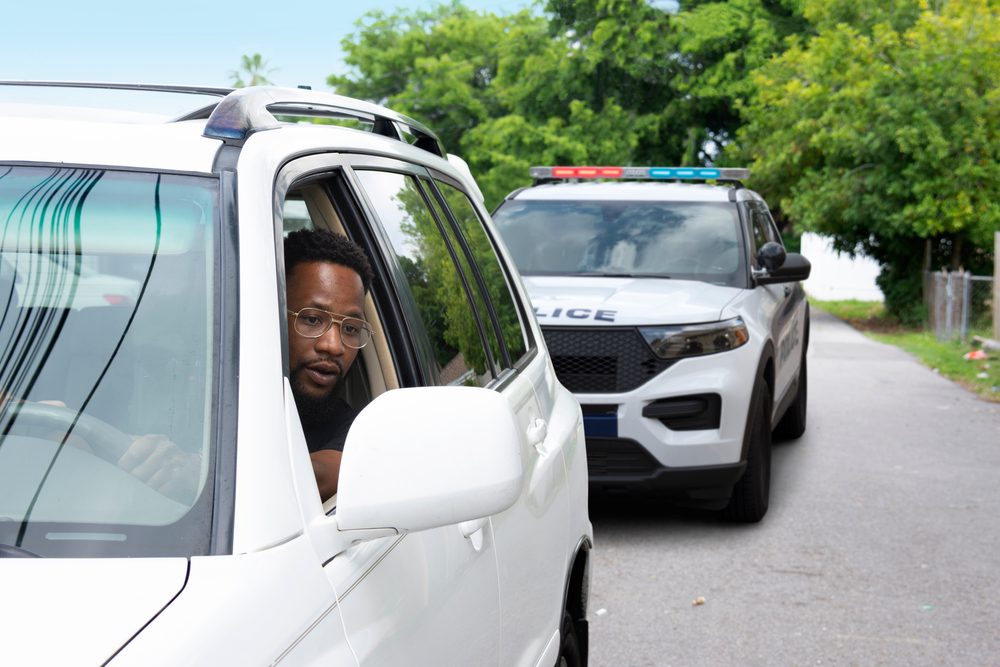Navigating a police stop can be a nerve-wracking experience, but it’s a crucial skill for any driver, seasoned or new. Feeling confident and secure during these encounters benefits both yourself and the law enforcement officers involved. Understanding the right actions to take not only reduces stress but also ensures a smoother interaction.
In this guide, we’ll walk you through seven essential steps to safely navigate a police stop. These steps are designed to create a respectful and secure environment for both you and the officer, emphasizing clear communication, compliance with regulations and maintaining a composed demeanor.
Whether you’re a veteran behind the wheel or just starting your journey as a driver, knowing how to handle a police stop is a fundamental skill. With these seven steps, you’ll be better equipped to navigate these situations calmly, confidently, and with a focus on safety for all involved parties.
1. Remain calm and pull over safely
As soon as you notice the flashing lights or hear a siren indicating a police stop, remain calm. Acknowledge the officer’s signal by using your turn signal and carefully pull over to the right side of the road in a safe and timely manner. Choose a well-lit and visible spot if possible.
2. Stay inside the vehicle and keep hands visible
After parking, stay inside your vehicle unless the officer instructs you otherwise. Roll down your window and keep your hands visible, preferably on the steering wheel. This action helps the officer feel more at ease and demonstrates your willingness to cooperate.
3. Communicate clearly and respectfully
When the officer approaches, greet them politely and follow their instructions. Provide necessary documents such as your driver’s license, vehicle registration and insurance when requested. If these items are not readily accessible, inform the officer of their location before reaching for them.
4. Avoid sudden movements
Any sudden or erratic movements might raise suspicions or concerns for the officer’s safety. Refrain from reaching for items or making sudden gestures without informing the officer first. If you need to access your glove compartment or any other area, ask for permission before doing so.
5. Follow instructions and be honest
If the officer asks questions, answer them honestly and respectfully. Avoid arguing or becoming defensive, as this could escalate the situation. Follow any instructions given by the officer, such as stepping out of the vehicle or staying seated, to ensure a smooth interaction.
6. Know your rights
It’s essential to understand your rights during a police stop. You have the right to remain silent and the right to refuse a search of your vehicle without a warrant. However, be cooperative and assert your rights calmly and respectfully.
7. Stay alert and review the stop
Once the interaction concludes, take note of any relevant details. If issued a ticket or citation, review it carefully and ask questions if something is unclear. Stay mindful of the details of the stop to address any concerns through appropriate channels if necessary.
Navigating a police stop demands a blend of composure, cooperation and awareness. By adhering to the outlined steps, you not only enhance your safety but also contribute to a smoother, more secure interaction between yourself and law enforcement.
However, it’s essential to recognize that these steps serve as general guidance. Variations in laws and protocols across different locations necessitate staying informed about local regulations. Your proactive understanding of regional rules and practices can significantly influence the outcome of a police stop.
Always remember: the ultimate aim is a harmonious exchange that prioritizes safety and respect. Each encounter with law enforcement offers an opportunity to exhibit responsible conduct, thereby fostering mutual trust and understanding.
Whether you’re an experienced driver or new to the road, the ability to navigate a police stop confidently is a valuable skill. By internalizing these steps and staying attuned to the specifics of your area’s laws, you’ll approach these situations with assurance, contributing to a safer, more amicable experience for all involved. Stay informed, stay composed, and prioritize safety in every interaction with law enforcement.
This story was created using AI technology.

















